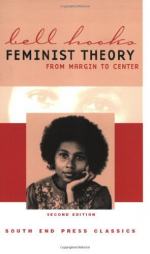
|
| Name: _________________________ | Period: ___________________ |
This test consists of 15 multiple choice questions and 5 short answer questions.
Multiple Choice Questions
1. What assertion does the author make (once again) about who benefits from the current feminist movement?
(a) She states that white middle class women stand to benefit more than anyone else.
(b) It can, and will, benefit people of both genders and all ages.
(c) Only women will benefit from the movement.
(d) Children will benefit, but not the current generation.
2. In the Preface, which four factors are most central to the author's argument about a person's position in society?
(a) Education, political beliefs, place of birth, and family name.
(b) Height, gender, income, and place of birth.
(c) Race, gender, income, and education.
(d) Race, weight, gender, and marital status.
3. In the Preface (2000), what examples does the author give of the problematic status of women in contemporary society?
(a) High divorce rates, low job benefits, no enough day care.
(b) High poverty, low status of single mothers, lack of state assistance and health care.
(c) Low job benefits, high poverty, high divorce rates.
(d) High poverty, high divorce rates, lack of state assistance.
4. What is the definition of feminism proposed by the author?
(a) Everyone should develop her own definition of feminism.
(b) The struggle to end sexist oppression in all its forms, whether economic, political, social, or sexual.
(c) Feminism must be defined as community before anything else.
(d) Feminism should be understood as total personal freedom for everyone.
5. At the end of the Preface to the second edition, where does the author maintain that a feminist path will lead us?
(a) To a world of peace, freedom, and justice, without sexism or domination.
(b) To a world where women have equality with men.
(c) To a world where sexism is kept at a minimum.
(d) To a major battle between the forces of peace and of domination.
6. How does the author describe feminism in the U.S.?
(a) As a separatist movement.
(b) As a bourgeois ideology based on liberal individualism.
(c) As a collective Marxist movement.
(d) As a radical revolution.
7. How does the author view the concept of personal freedom?
(a) It is an honorable and uplifting concept.
(b) It promises to be an idea around which the feminist movement can rally.
(c) It runs the risk of promoting sexual infidelity.
(d) It is grounded in preserving the patriarchal, capitalist, individualist status quo.
8. How does the author characterize the aims of the feminist movement in relationship to other movements?
(a) The aims and goals of the feminist movement are really separate from other movements.
(b) The feminist movements aims and intentions are interwoven with those struggling against classism, racism, heterosexism, and other forms of oppression..
(c) There is a relationship between feminism and the struggle against ageism, but that is all.
(d) Feminists should stay focused on their own goals and not look to other movements.
9. What major difference between white and black men does the author point out?
(a) Black men were not as threatened by strong women functioning outside traditional gender roles.
(b) White men were not as threatened by strong women functioning outside traditional gender roles.
(c) White men encouraged women to go to work whereas black men did not.
(d) Black men did not trust women who worked outside the home.
10. The author cites Lillian Hellman's autobiography as an example of what kind of phenomenon?
(a) White women projecting mythical power and strength on black women while presenting themselves as powerless.
(b) An early white feminist who listened to women of color.
(c) White women being afraid to tell their domestic servants what to do.
(d) An rare example of working class writing.
11. What did these early feminists forget to take into account in their beliefs about men?
(a) Differences in age and profession.
(b) Whether men were married or single.
(c) Differences in race and class.
(d) Differences in religion and age.
12. At the end of the Preface (2000), what does the author say regarding "patriarchal mass media" and feminism?
(a) It trashes feminism or tells the public it is a dead movement.
(b) It appropriates feminist language for its own uses.
(c) It completely ignores feminism and feminists.
(d) It creates low self-esteem in feminists.
13. Why does the author hold her particular beliefs about prioritizing struggles against different forms of prejudice?
(a) As a black woman, she feels that race is a more pressing matter than feminism.
(b) She holds her views because she needs to maintain her standing in the academic community.
(c) All are ultimately as destructive of society and the individual as the other.
(d) Because she is a women, she places gender issues first.
14. What was the shared feeling that helped define sisterhood in the early years of the movement, according to the author?
(a) Artistic inspiration.
(b) A love of adventure.
(c) A sense of victimization.
(d) Desire for greater affluence.
15. How does the author describe the family in "Western society"?
(a) Television has destroyed family relationships.
(b) For centuries it has been dominated by a sexist, patriarchal, authoritarian model.
(c) The Western family is based on nurturing and equality.
(d) It is no longer the primary social unit.
Short Answer Questions
1. According to the author's Preface (2000), where is visionary feminist discourse increasingly talked about?
2. When and where did the author enroll in her first women's studies class?
3. The author states that most women would like to be like ________________.
4. What must be learned in order for the feminist movement to be successful?
5. The phrase "the problem that has no name" refers to which of the following issues?
|
This section contains 972 words (approx. 4 pages at 300 words per page) |

|




